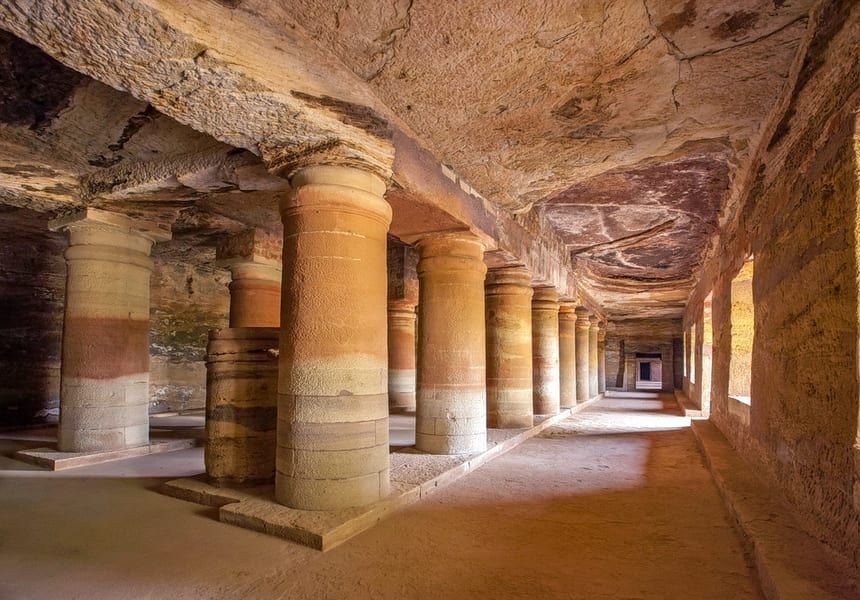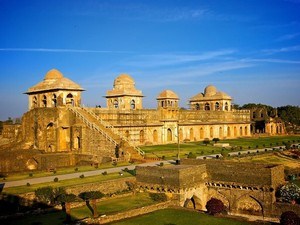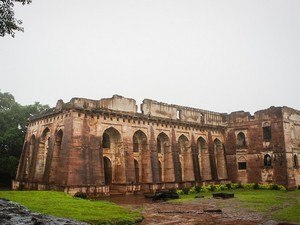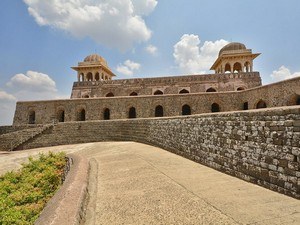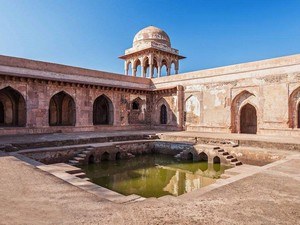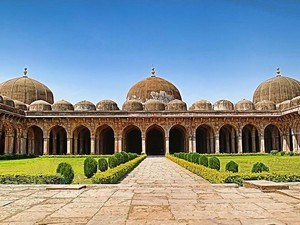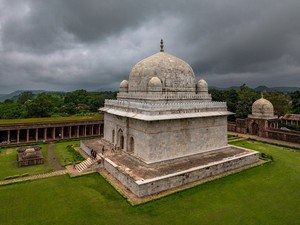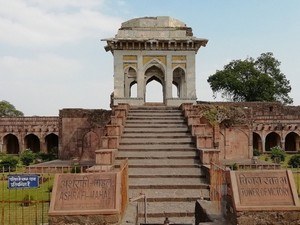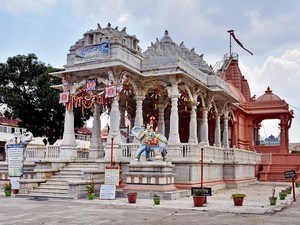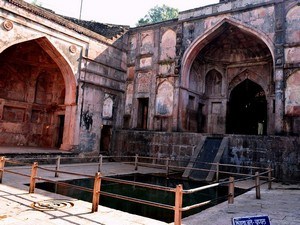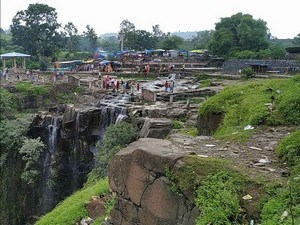Bagh Caves, Mandu - Timings, History, Architecture, Best Time to Visit
 India | Madhya Pradesh | Mandu
India | Madhya Pradesh | Mandu
 #21 of 26 Places to Visit in Mandu
#21 of 26 Places to Visit in Mandu
 Distance (From Mandu): 102 Kms
Distance (From Mandu): 102 Kms
 Trip Duration (Including Travel): 4 Hours/Half Day
Trip Duration (Including Travel): 4 Hours/Half Day
 Transportation Options: Bus / Cab
Transportation Options: Bus / Cab
 Travel Tips: None
Travel Tips: None
At a distance of 94 km from Dhar, 102 km from Mandu, 117 km from Maheshwar, and 153 km from Indore, the Bagh Caves are ancient rock-cut caves situated along the southern slopes of the Vindhyas in Bagh town of Dhar district in Madhya Pradesh. These are among the popular heritage in Madhya Pradesh, and among the major places to visit near Indore, and Mandu.
Bagh Caves are a group of nine rock-cut monuments renowned for mural paintings. Like Ajanta Caves, these caves were excavated by master craftsmen on the perpendicular sandstone rock face of a hill on the far bank of a seasonal stream, the Baghni. These caves are believed to have been built during the 5-6th century CE. A copper plate inscription of 416-17 CE by Maharaja Subandhu of Mahishmati, which is identified as the modern Maheshwar, talks about a grant for this Vihara. It is called Kalyana Vihara in the inscription. It is believed that a Buddhist monk named Dataka established Bagh Caves. The caves were probably abandoned with a fall in Buddhism, by 10th CE and later these caves became the abode of tigers of the region, hence getting the name Bagh.
Of the nine Buddhist caves, only five have survived. All of them are 'viharas' or resting places of monks' monasteries having a quadrangular plan. A small chamber, usually at the back, forms the 'chaitya', the prayer hall. Of the 5 better-preserved caves, Cave no. 2 locally called Gonsai Gupha or Pandavon ki Gupha has the most elaborate plan. This rock temple has a large monastic hall at the center. An imposing six-pillared portico adorned its front. A large recessed cell enshrining a stupa stands at the backside in the center which gave monks much-needed privacy and atmosphere for sacred meditation. The central hall having the support of massive pillars decorated with spiral fluting served the purpose of the prayer hall.
The other caves were more or less identical in plan except for certain minor modifications as visible in Cave no. 3 which is purely a vihara or monastery locally called 'Hathi Khana'. It was also very elaborately carved and designed. The fourth cave is the largest and the most remarkable one of the series and is commonly known as the Rang Mahal (Palace of Colors) that contained the best paintings. It has three entrances and two windows. The main door is most attractive and well-finished. The roof of the hall has the support of twenty-eight pillars which are square at the base and change to octagons and then polygons again change to octagons at the summit. A painting of the bodhisattva Padmapani is believed to be a prototype of the one at Ajanta. To protect the frescoes from permanent damage, as many as 21 specimens were removed from Cave 4 alone. These paintings are now housed in the Archaeological Museum in Gwalior, and the on-site museum in Bagh.
Cave 5 was neither a chaitya nor a vihara. By its shape and arrangement, it was a lecture hall locally called Pathashala. It has no aisles, cells, stupa, or image and is completely plain devoid of any ornament. Archaeological Survey of India has restored the place for over 17 years. One can also visit the on-site Bagh Museum. There are sections of retrieved paintings that depict various Jatakas including Buddha's miracle at Kapilavastu, a horse procession of the Lichhavis at Vaisali, Princess Malini of Benares, Boddhisatva Padmapani, and a sequence of female musicians and their stories in captions.
Timings: 9 AM - 5 PM
Entry: Rs. 25 for Indians & Rs. 300 for Foreigners



